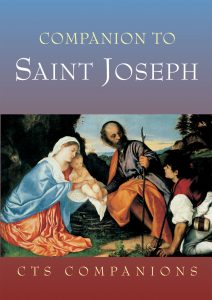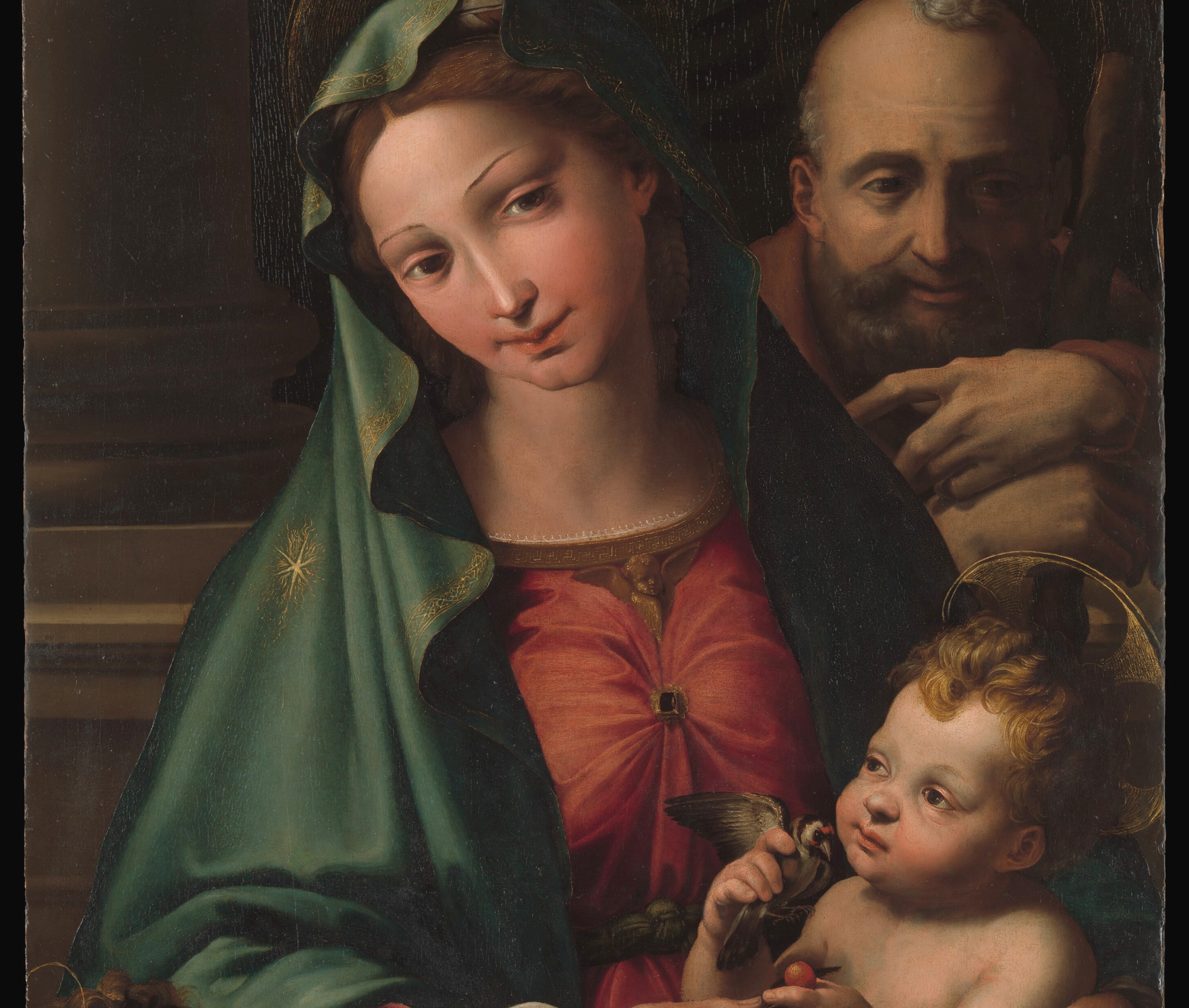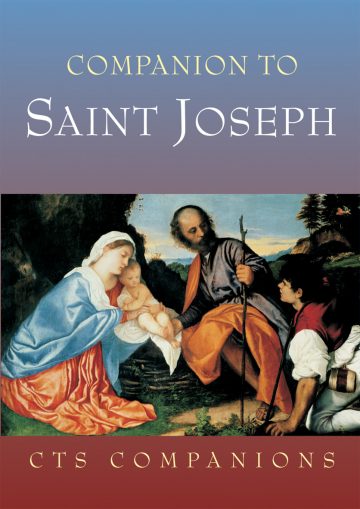Joseph’s death
Joseph has withdrawn from the Gospel story by the time his foster-son is thirty and about to begin His public mission at the wedding-feast in Cana. The time has come for Jesus to speak of His heavenly Father as the centre of His mission, and there must be no ambiguity to confuse His listeners. It appears that, with his task complete, Joseph had died peacefully in the presence of Jesus and Mary, but recently enough to be remembered as Jesus’ father. (cf. Jn 6:42).
An 18th century painting of the ‘Death of Joseph’ by Carlo Rambaldi, inspired by ‘The History of Joseph the Carpenter’, portrays the comforting presence of Jesus and Mary, a blessing for which everyone prays in the Hymn for Morning Prayer on 19th March: “Saint of the dying, blest with Mary’s presence, in death you rested in the arms of Jesus; so at our ending, Jesus, Mary, Joseph, come to assist us.”
In His last moments upon the Cross, Jesus remembered that widows in first century Palestine faced a bleak future, so He entrusted His mother to the care of St John, something He would not have done had His foster-father still been alive. Mary became the trustee of her Son’s Church until Pentecost and, in St John’s person, accepted every human being as her own child, everyone a brother and sister to her Son, and so a foster-child of her husband. (cf Jn 18:25-27). An American nun has written a touching poem about Our Lord’s descent into Limbo to release the souls of the just who had died before Him. St Joseph is the first to greet Him: “Hello Son! How’s your Mother?”
In his Scripture Commentary, St Bede the Venerable writes that Joseph’s body was eventually entombed in the Valley of Josaphat, one of his Davidic ancestors through whom his foster-son inherited the Messianic throne. The spot is part of the Cedron Valley east of Jerusalem, and reputed to be the site of the Last Judgement. It seems splendidly appropriate that if this is the place where Our Lord will return in triumphant glory at the end of time, His foster-father’s body should be the first to be re-united with his noble soul. (cf. Mt 25:31).
St Teresa of Avila (1515-82) dedicated the Mother House of her reformed Carmelite communities to the Saint, and recommended complete confidence in one whom she found always granted every favour she requested. “It seems that God has given to other saints the power to help us with particular problems, but I know from experience that Joseph helps us in all our needs. Our Lord wants us to know that just as He was obedient to His foster-father in all things here on earth, so now He still grants everything he desires in heaven.”
This influence is vividly illustrated in the Menorcan cathedral in Ciudadella where the Joseph Chapel has two sets of lifesize statues. In the lower pair, Joseph holds Jesus’ hand in the unique relationship which makes him such a powerful advocate and, above, the Divine Child in glory is still hand in hand with His haloed foster-father. The Carmelites adopted Joseph as their Patron, and, in 1689, were given permission to celebrate the Feast of his Patronage, a privilege later extended to Spain and other countries who sought the approval of the Holy See.
Meanwhile, Jean Gerson, French theologian and chancellor of the University of Paris had composed a liturgical office for a feast called the ‘Espousals of Mary and Joseph’, and this was so warmly received by the faithful that Pope Paul III (d.1549) sanctioned its celebration on 23rd January, first to the Franciscans, and then to other religious congregations and dioceses. As ‘The Betrothal of Our Lady to Saint Joseph’, it had a place in the Roman Calendar until its revision after the Second Vatican Council.
Patron of a Happy Death
Saint Teresa recommended confidence in this most influential of intercessors because, just as Our Lord obeyed His foster-father on earth, so now He remains anxious to please him in Heaven. This is of particular comfort to mortals when they contemplate departure from this life and naturally recoil from a great leap into the unknown. Joseph’s legacy includes the recollection of his most blessed death in the arms of Jesus and Mary and, as we move from time to eternity, he is there to ease our passage with the reassurance of their same loving presence keeping at bay the doubts of the evil one.
Patron of Homeseekers
Having moved to Nazareth, presumably from Bethlehem, Joseph met and was betrothed to Mary but was then confronted with the startling news of the Annunciation with all its painful implications. When the Census was called, he had to undertake an arduous journey back to Bethlehem where he could find nothing but a cave in which to shelter his wife who was about to give birth. Then he had to seek asylum for his family in Egypt to escape Herod’s murderous threat to his foster-son. When Herod died, the character of his successor precluded a return to Judaea, so he took his family back to Nazareth. Those who seek refuge from persecution, who are worried about accommodation, finding a deposit, raising a mortgage, buying and selling a house with the associated horrors, can turn to Joseph for his sympathetic and eager assistance.
The Model of Workers
In the pure delight of the Garden of Eden, humanity lived in blissful harmony with God who wanted His Creation to share His indescribable happiness. There was no arduous, monotonous toil to keep body and soul together until Adam and Eve succumbed to Satan’s envious mischief. Their disobedience let loose the virus of sin with its punishments, one of which came in the shape of unwelcome labour. “Accursed be the soil because of you,” God told them. “With suffering shall you get your food from it every day of your life… With sweat on your brow shall you eat your bread.” But God’s mercy is immediate, and He soothes the pain with a promise of victory over the forces of evil. In the first “glad tidings” of His constant love for humanity, despite its fall from grace, He told Satan that He was putting enmity between him and the woman, between the powers of darkness and her descendants, one of whom would finally obliterate him. (cf. Gn 3:15;17).
Thus it is that economic activity, exercised in the moral order and compatible with social justice, is enshrined in God’s plan of salvation. The work of human beings, created in His image, becomes an individual and communal participation in His work of Creation, and work an honourable use of the talents and resources He has given to us. The undertaking of its demands unites us to Our Lord, the Carpenter who learned His craft from Joseph who collaborated with Him in His work of Redemption. The disciple takes up the cross of daily work which becomes a means to holiness, and things which seem mundane, or “work-a-day”, become imbued with the spirit of Christ. (cf. ‘Catechism of the Catholic Church’, 2426-7).
Pope John Paul II describes the Holy Family of Nazareth as “the model for human families in the order of salvation and holiness”, and their work as a daily expression of love.
“With the humanity of the Son of God, work has been embraced in the mystery of the Incarnation, and has also been redeemed in a special way… At the work-bench where he plied his trade with Jesus, Joseph brought human work closer to the mystery of Redemption. When the human personality of Jesus developed in wisdom, age and grace, the virtue of industry played a significant role, because work is a human good which transforms nature and makes man, in a sense, more human.”
The Pope concludes that:
“what is important is the sanctification of daily life which each person acquires according to his state, and this can be promoted according to a model accessible to all people. Saint Joseph is the model of those humble ones that Christianity raises to great destinies…He proves that to be a good and genuine follower of Christ, there is no need of great things. It is enough to have the common, simple and human virtues, as long as they are true and authentic.” (‘Guardian of the Redeemer’ 22-27).
Exemplar of the Interior Life
It was in his vibrant relationship with God, fidelity to prayer and profound reverence for His word in the Scriptures, that Joseph found the strength and courage to surrender his own hopes and interests in the cause of the divine plan. Four times he received striking messages in dreams and, each time, he unhesitatingly complied with God’s wishes, and accepted total responsibility for the Holy Family while nobly denying himself the natural solace of conjugal love. He was in constant contact with the Saviour who chose to live under his roof and, in this unique relationship, the exchange of fatherly and filial love enabled great decisions to be taken. It illuminates the mystery of the Incarnation, and the human nature of Our Lord which sanctifies all His brothers and sisters with a share in His divinity. “By virtue of His divinity, Christ’s human actions were salvific for us, causing grace within us by merit and efficacy.” (Thomas Aquinas, ‘Summa Theologica’, 2-2). The mystery of grace, the saving acts of love, are present in the Nativity, the Circumcision, the Presentation, the escape to Egypt, and the hidden life in Nazareth. Through Jesus’ humanity His love shines on all, but first it shone on Mary and Joseph. (cf. ‘Guardian of the Redeemer’ 25-27).
 This blog is extracted from our ebook Companion to St Joseph. A companion to the history of devotion to St Joseph in which the author presents a rare and unique portrait of the husband of the blessed Virgin Mary: father, worker, and guardian of our Redeemer.
This blog is extracted from our ebook Companion to St Joseph. A companion to the history of devotion to St Joseph in which the author presents a rare and unique portrait of the husband of the blessed Virgin Mary: father, worker, and guardian of our Redeemer.
Download an ebook of the Companion to St Joseph on your preferred ebook platform.

